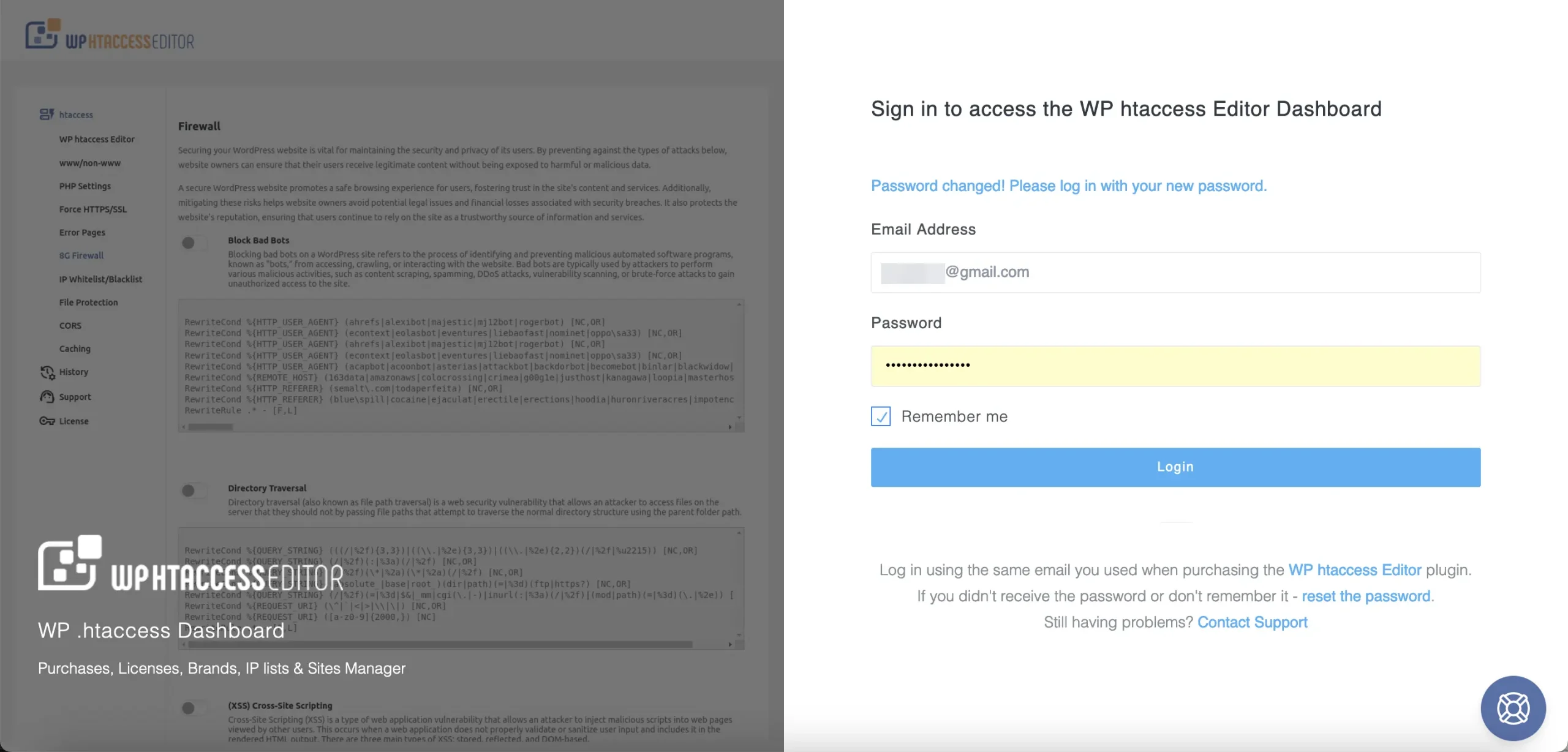As someone who’s spent countless hours working with WordPress sites, I know how critical it is to manage your .htaccess file effectively. It’s a powerhouse for optimizing site performance, improving security, and enhancing SEO, but it also comes with risks. Misconfigurations can break your entire site. That’s why I decided to try out WP Htaccess Editor, a plugin designed to simplify .htaccess file management.
Here’s my detailed review of the plugin, from its features and usability to the pros and cons of incorporating it into your WordPress toolkit.

First Impressions of WP Htaccess Editor
When I first installed WP Htaccess Editor, what immediately stood out was its clean and straightforward interface. The plugin integrates seamlessly into the WordPress dashboard, with all essential tools conveniently located under one tab. It’s evident that this plugin is designed for efficiency, catering to both beginners and advanced users.
Unlike manually editing .htaccess via FTP, which feels risky and time-consuming, this plugin provides a safe and intuitive environment to manage configurations.
Key Features of WP Htaccess Editor
1. Easy .htaccess Editing
The main draw of WP Htaccess Editor is its ability to edit the .htaccess file directly from the WordPress dashboard. The editor includes syntax highlighting, which makes code easier to read and errors easier to spot. This is a big win for developers like me who regularly tweak settings.
2. Automatic Backups
One of my biggest fears when editing .htaccess is breaking the site and having no way to revert the changes. WP Htaccess Editor automatically creates backups every time you make a change. This safety net gave me the confidence to experiment with different configurations.
3. Pre-Built Templates
For users who are less comfortable writing their own .htaccess rules, WP Htaccess Editor offers pre-built templates. These include configurations for common tasks like enabling caching, restricting access, and improving site security. I found these templates particularly useful as a starting point.
4. User Permissions
The plugin allows you to restrict access to .htaccess management based on user roles. This is a thoughtful feature, especially for multi-author websites where you may not want every user to have access to sensitive files.
5. Inline Validation
The plugin’s built-in validation feature checks your .htaccess file for errors before saving it. This ensures that you won’t accidentally break your site with incorrect syntax.
6. Comprehensive Documentation
WP Htaccess Editor comes with thorough documentation and guides. Even for a seasoned WordPress user like me, these resources were helpful for exploring advanced configurations.
My Experience Using WP Htaccess Editor
 Installation and Setup
Installation and Setup
Installing the plugin was straightforward—just like any other WordPress plugin. Once activated, the .htaccess management panel was easily accessible from the WordPress admin area. I appreciated the plugin’s minimalistic design, which didn’t overwhelm me with unnecessary options.
Editing the .htaccess File
I tested the editor by adding caching rules to improve site speed and implementing security measures to block unwanted bots. The syntax highlighting and inline validation helped me avoid errors, and the backup system ensured I could roll back if needed.
Using Pre-Built Templates
Out of curiosity, I explored the pre-built templates. They’re well-designed and cover a range of practical scenarios. For example, I used the GZIP compression template to improve loading speeds, and the process was as simple as selecting the template and clicking “Apply.”
Backup and Restore
While testing, I intentionally introduced an error to see how the backup and restore feature worked. Within seconds, I reverted to the previous version, and my site was back up and running without a hitch.
Advantages of WP Htaccess Editor
- User-Friendly Interface The plugin’s interface is intuitive and suitable for users of all skill levels.
- Built-In Safety Features Automatic backups and inline validation make
.htaccessediting less intimidating. - Time-Saving Templates The pre-built templates save hours of manual coding for common tasks.
- Advanced Control The plugin offers granular control over permissions, which is a huge plus for teams.
Areas for Improvement
While WP Htaccess Editor excels in many areas, there’s always room for improvement:
- Free vs. Paid Features:
Some advanced features, like custom templates and extended backups, are locked behind the premium version. While the free version is powerful, advanced users may need to upgrade. - Limited Aesthetic Customization:
Although functional, the interface could benefit from more customization options to match the branding of a website. - Mobile Usability:
Editing.htaccesson mobile is possible but not as seamless as on a desktop.
Comparison with Other Plugins
Yoast SEO
Yoast SEO offers .htaccess editing as a secondary feature, but it lacks the advanced safety measures and templates that WP Htaccess Editor provides.
All In One WP Security & Firewall
While this plugin includes .htaccess configurations, it focuses more on overall site security and doesn’t offer the same level of customization.
Custom Code Snippets
Manually adding .htaccess rules or using generic code snippet plugins can work, but they lack the user-friendly environment and backup capabilities of WP Htaccess Editor.
Who Should Use WP Htaccess Editor?
- Beginners:
The plugin’s pre-built templates and validation tools make it accessible to those new to WordPress. - Advanced Users:
Developers and tech-savvy users will appreciate the granular control, syntax highlighting, and backup features. - Agencies and Teams:
Multi-user websites benefit from the plugin’s role-based permissions.
Final Thoughts
After using WP Htaccess Editor for a few weeks, I can confidently say it’s a must-have plugin for WordPress users who want to manage their .htaccess files safely and efficiently. Its combination of user-friendly design, robust safety features, and advanced customization options sets it apart from other solutions.
If you’re serious about optimizing your WordPress site for speed, security, and SEO, WP Htaccess Editor is worth considering. Whether you’re a novice or a seasoned developer, this plugin provides the tools you need to take control of your .htaccess file with confidence.
 logo
logo



